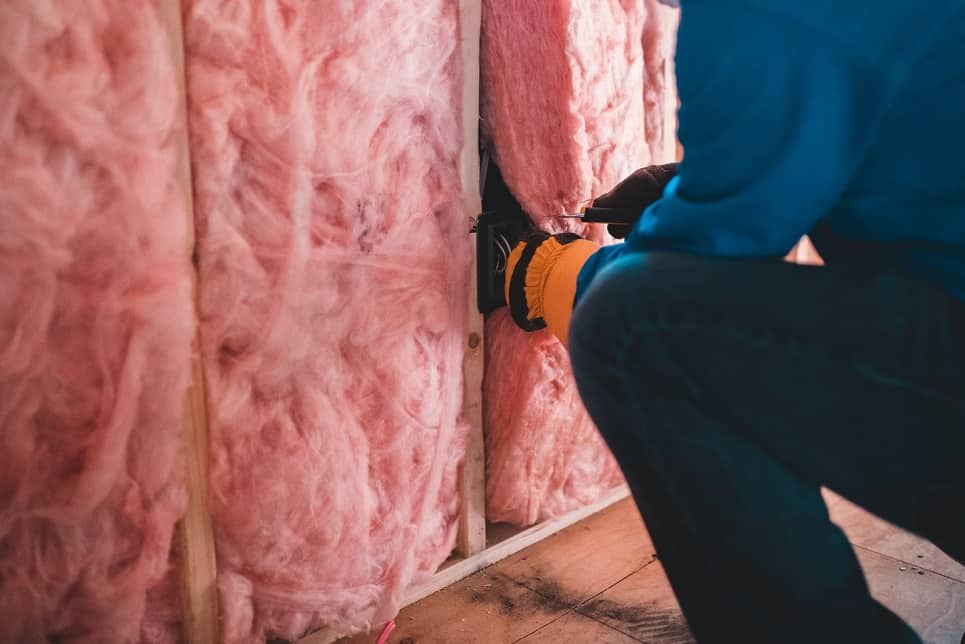Eliminating heat transfer through the walls, roof, floor, or attic entirely isn’t possible, but residential insulation enables you to reduce it significantly. In this R15 insulation guide, we’re going to debunk the importance of the R-value and help you understand where and how you should use it.
Thermal resistance is just one factor you need to consider while choosing the insulation material since the moisture or noise protection of a specific material can help you meet your state’s residential insulation codes and standards.
All R15 insulation materials can increase your home’s energy efficiency by reducing the amount of cold or warm air entering your home. You should read our guide to heating systems to explore different options you can use to keep your home warm during winter.
Key Specifications of the R15 Insulation
Soft to the touch and easy to cut and install, Owens Corning insulation has a strong reputation with home builders for delivering the performance you can trust.
The thermal resistance shows you the insulation material’s ability to disrupt the flow of the heat. Therefore, despite being one of the most important characteristics of insulation materials, the R-value cannot be the only parameter you’re using to search for R15 insulation.
Fiberglass batt, mineral wool, and all other types of insulation materials can have a thermal resistance ratio in the range between 3 and 60. So, two insulation materials can have the same R-value despite having different characteristics.
That’s why it’s hard to talk about a standardized set of features you should expect from R15 insulation, and you have to learn more about the properties of each material to understand how it performs in different conditions.
Also, factors like the climate in the region where you live or the area of your home you want to insulate can affect your decision to choose one R15 insulation material over another. Finally, go through our guide to cooling systems if you’re looking for a way to keep your home cool.
Core Features of the R15 Insulation
The most common application of R15 insulation is the insulation of 2×4 exterior walls, but you can also use it to insulate floors, basements, and even attics. Before you decide to use an R15 insulation material to insulate a specific segment of your home, you must first calculate the U value of that segment.
The U value is the combined thermal transmission coefficient of all materials that constitute a specific part of the house’s construction. Simply put, the U value shows the combined thermal resistance of the bricks, wood, concrete, or other construction materials within a particular element.
Hence, you should only choose the R15 insulation if it complements the U value of the segment you’d like to insulate. Creating two or more layers of R15 insulation allows you to double or triple the material’s thermal resistance.
Check out our guide to furnace types if you’re looking for a whole-house heating solution.
Types of R15 Insulation
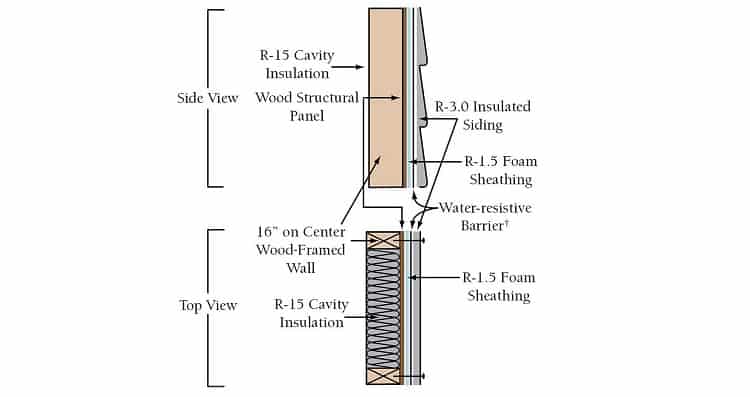
The abundance of insulation types and materials makes the R15 insulation selection process difficult. That’s why you have to become more familiar with different types of insulation and the materials that are commonly used to make them.
According to the U.S Energy Department, there are nine residential insulation types that can be used to insulate anything from duct and crawl spaces to unfinished walls and ceilings. Let’s take a look at some of the R15 insulation types you can use in your home.
- Blanket batt and roll insulation – This is the most common and least expensive type of R15 residential insulation. It is usually made of fiberglass, mineral wool, and natural or plastic fibers. Its intended uses are the insulation of uncompleted walls, floors, or attics.
- Rigid foam and foam boards – Although they’re suitable for interior and exterior applications, polyurethane, polystyrene, and polyisocyanurate R15 rigid foam boards must be covered properly to protect against fire and humidity.
- Blown-in insulation – This insulation type makes insulating the areas that are hard to reach easier. The installation process can be overwhelming for DIYers because it involves using the equipment to distribute the material evenly.
The R15 insulation types we’ve covered here are not the only options you have at your disposal, and you should consider reflective systems or fiber insulation if it matches your home’s requirements.
Browse through our guide to mini-split systems to learn how you can use them to control the air temperature in your home.
Heat Resistance Capacity
Even though climate plays a large role in the residential insulation selection process, the heat resistance capacity of R15 insulation makes it suitable for wall insulation in all climates. As we already pointed out, materials with R15 value are commonly used to insulate 2×4-inch walls.
However, you’ll have to search for materials with higher R values if you want to insulate floors or crawlspaces in homes located in regions with cold climates.
A two-layer R15 insulation structure should be sufficient to insulate floors, attics, and crawlspaces in regions with temperate climates.
In addition, the position of the room you’re insulating and the amount of sunlight it receives throughout the day can affect your decision to opt for R15 insulation or a material with a higher R-value. Read our guide to ventilation systems to explore different ways of keeping the air in your home fresh.
Noise Blocking Potential
All insulation materials, regardless of their type, dampen the outside noises. The thermal resistance and noise blocking ability of insulation materials depend on their thickness. That’s why the material with R40 value is more effective at canceling noises than the same material with R15 value.
The width of R15 insulation materials varies from 3.5 to 4 inches, so you shouldn’t expect high-end sound absorption performances. Even so, it should block most traffic and city sounds, which makes it suitable for use in residential settings.
You should also keep in mind that the noise blocking potential of different R15 insulation materials isn’t the same. You should opt for R15 fiberglass insulation if you’re looking for an affordable material that can prevent the sound waves from traveling through the walls of your home.
Go through our guide to heat pumps to learn more about their benefits and drawbacks.
Temperature Range of R15 Insulation Materials
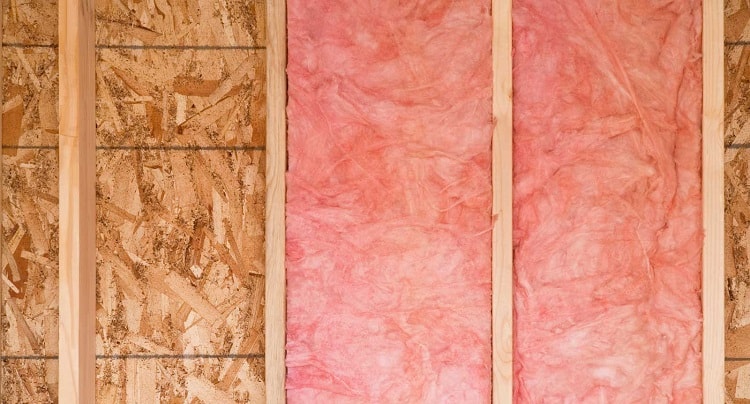
The burning point of R15 insulation materials spans from 165F for polystyrene to 2200F for mineral wool and ceramic fiber. Thus, fire-resistant insulation like fiberglass or stone wool can withstand prolonged exposure to temperatures over 1,000F.
It is worth adding that the material’s R-value is in no way related to its ability to withstand high temperatures. Also, some R15 insulation materials perform well at temperatures below 0F, but they catch fire once the indoor temperature rises above 150F or 200F.
Checking the temperature rating of the R15 insulation material you’d like to get will help you determine how much protection it can offer in case of an accident. Also, check out our guide to wood stoves to find out more about their heating capacities.
Moisture Control Abilities
The thermal resistance of all types of insulation materials decreases if the material gets soaked. That’s why you can choose between faced and unfaced versions of R15 insulation materials. Faced insulation contains a retarder, a sheet of paper that protects it from moisture.
Hence, they’re used in parts of the house that are exposed to high humidity levels, such as exterior walls, attics, or ceilings. Opting for a faced version of R15 insulation materials will help keep your home dry, and it will lower the air humidity level.
The material’s moisture control capacities aren’t affected by its heat transfer ratio, and you should pay close attention to this feature if you’re insulating a room that is likely to come into contact with high volumes of moisture.
You should also browse through our guide to humidity control systems to find out how you can keep the air humidity in your home at recommended levels.
Pest Protection
Sadly, truly rodent-resistant insulation doesn’t exist, even though some brands offer pest-resistant insulation. So although R15 insulation can prevent pests from entering your home, it shouldn’t be your only line of defense against insects, rodents, or mites.
Some insulation materials are effective in repelling vermin-like mice because they don’t tolerate the taste or the smell of a specific material. That’s why you should avoid fiberglass batts if you want to get rid of the pests since it is considered one of the best materials for rat nesting.
Cellulose or polyurethane R15 insulation materials is more effective at preventing the vermin from entering walls, ceilings, or crawlspaces.
Browse through our guide to the best garage air conditioners to find an option that will help you regulate the temperature of this part of your home through cooling and heating seasons.
Power Saving Efficiency
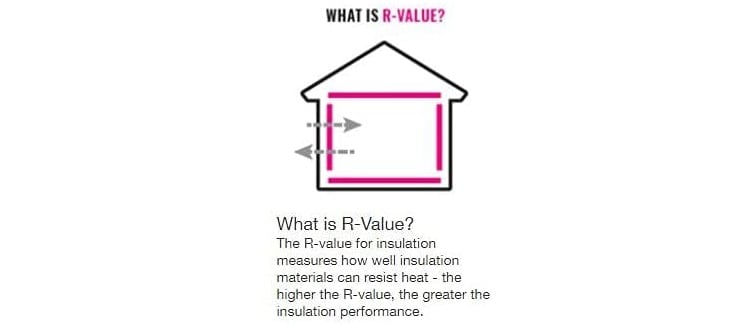
The amount of power a Goodman 3-ton heat pump or any other heating and cooling system will use depends on the quality of insulation. R15 insulation materials can increase the space’s energy efficiency in which they’re installed, but only if they’re used correctly.
You can use all types of insulation materials to insulate 2×4-inch walls regardless of the climate you live in. However, if you live in a cold region climate, you’ll have to look to insulate the floor and ceiling with material that has an R-value higher than 15.
Go through our guide to the best 5-ton heat pumps to learn more about how these cooling and heating systems can help you lower your monthly power consumption.
Installation Costs
The amount of money you’ll have to spend to install R15 insulation depends on your chosen material. Fiberglass rolls and batts are the most affordable option because they don’t require professional installation.
The average cost of installing blown-in R15 insulation materials is $1,500, or between $1 and $1.50 per square/foot. This means that the actual installation costs depend on the size of the area you want to insulate.
Also, you’ll have to spend more to install insulation in an attic than you’d have to spend to insulate exterior walls. Go through our guide to the best Home Depot mini-splits to explore the models this retailer offers.
The Pros of R15 Insulation
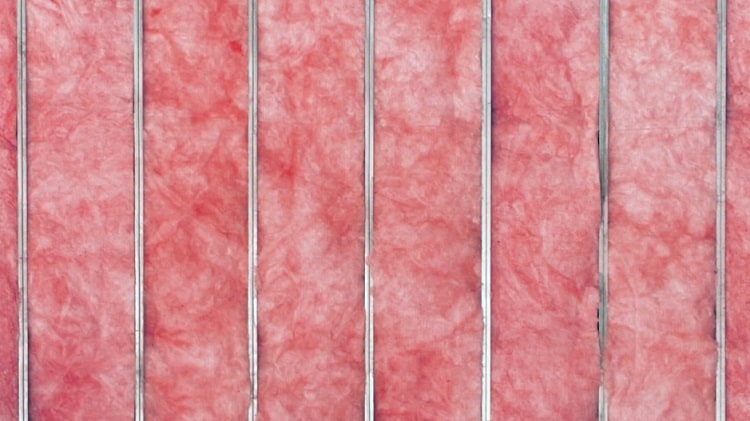
A Broad Range of Applications
You can use the R15 insulation to insulate exterior walls, floors, ceilings, or basements with the same efficiency level. However, it is important to remember that you need to check if the R15 insulation material matches the U value of the wall or floor you want to insulate before you decide to use it.
Multiple Material Options
You can choose from a variety of materials that have R15 value. This enables you to pick an option that best fits the space you’d like to insulate.
Long Lifespan
The average lifespan of R15 insulation varies from 20 years for fiberglass materials to more than 50 years for polyurethane. Some manufacturers claim that their insulation materials last as long as the structure they’re installed in.
Great Moisture Blocking Capacities
Opting for the faced version of R15 insulation will ensure that moisture cannot enter the walls or floors. You can also install a vapor barrier over the insulation material to add another moisture protection layer.
High-Temperature Ratings
R15 insulation materials like fiberglass or mineral wool won’t catch fire even if they’re exposed to temperatures higher than 1000F. These materials can lower the fire’s growth rate and hamper its spread through the affected area.
Soft to the touch and easy to cut and install, Owens Corning insulation has a strong reputation with home builders for delivering the performance you can trust.
The Cons of R15 Insulation
Limited Sound Blocking Capacities
The R15 insulation isn’t thick enough to prevent the sound waves from going through the insulated surface. R19 or R30 insulation materials are better at absorbing sounds than R15 materials because they are more than six inches thick.
Installation of R15 Insulation Can Be Expensive
Insulating a 2,000sq/ft house with an R15 insulation material can cost more than $2,000. Also, the installation process of insulation materials can take more than a week to complete.
The Best Alternatives to R15 Insulation
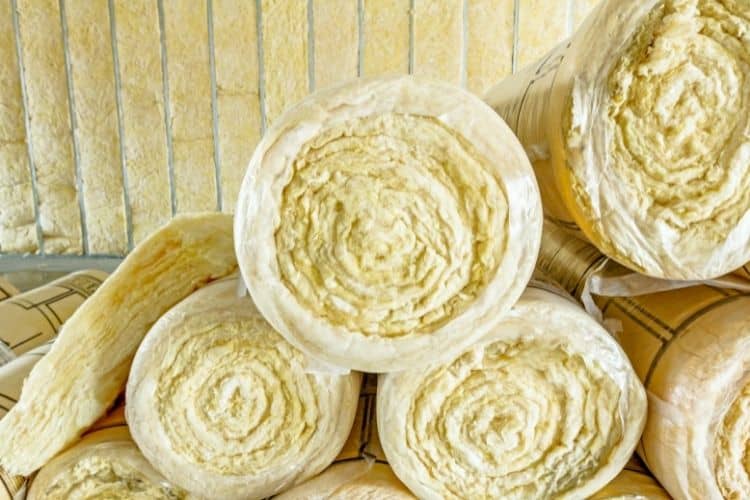
Determining the right thermal resistance value for a specific space can be difficult, especially if you don’t know the properties of different construction materials. However, you have to calculate the U value to determine which R-value the insulation material should have.
We’ve shortlisted some of the best alternatives to R15 insulation, so let’s take a look at their key features.
R11 Insulation Materials
Kraft faced rolls - "Greenguard" certified LEED eligible. The Package Length of the product is 60.96 inches and the width is 63.5 inches.
Although you can use them to insulate a 2×4-inch wall, the R11 insulation materials are best suited for spaces that are hard to reach. Although its thermal resistance is relatively low, the R11 insulation can still reduce the heat transfer through the insulated surface.
The moisture and sound blocking capabilities of R11 insulation depend on the material you choose. You shouldn’t expect an excellent soundproofing performance because most R11 insulation materials are around 3-inches thick.
R13 Insulation Materials
Improve the comfort of your home with the exceptional thermal control, noise reduction and peace of mind of Owens Corning PINK Fiberglas insulation.
Most industry professionals claim that the differences between R13 and R15 insulation materials are marginal. Insulation materials with either of these R values are commonly used to insulate exterior 2×4 inch walls or basements.
However, R13 insulation isn’t an ideal solution for attics, especially if you live in a cold climate region. The price difference between R13 and R15 insulation materials isn’t significant, but R13 installation is still a more affordable option.
Read our R13 vs R15 Comparison to learn more about their difference.
R19 Insulation Materials
With less dust than other fiberglass products, EcoTouch PINK Fiberglass insulation has excellent stiffness and recovery characteristics.
If you’re looking for a suitable insulation solution for a 2×6-inch wall, then R19 insulation materials might be the right choice for you. They’re almost two inches thicker than R15 insulation materials, which means that they have better sound absorption capacities.
Also, you can combine R19 insulation materials with materials that have higher R values and use them to insulate an attic or a roof. The pest control features or the temperature range of R19 and R15 insulation materials are the same, but the R19 insulation is more expensive.
Frequently Asked Questions about R15 Insulation
Question: How to Know if I Can Use R15 Insulation?
Answer: You must calculate the U value of all the building elements to determine if R15 insulation offers enough thermal insulation to keep a particular space cool or warm.
Question: Does R15 Insulation Need a Vapor Barrier?
Answer: Whether or not you’re going to need a vapor barrier depends on the R15 insulation material you choose.
Question: Is R15 Insulation Toxic?
Answer: Some R15 insulation materials can contain noxious chemicals, but most of the available options aren’t harmful to your health.
Question: Can I Install R15 Insulation By Myself?
Answer: You can install R15 fiberglass batts on your own, but you might need professional assistance to install R15 cellulose blow-in insulation.
Our Verdict: Can R15 Insulation Make Your Home More Energy-Efficient?
The selection process of the materials you’re going to use to insulate your home shouldn’t be based solely on the material’s thermal resistance.
Calculating the U value, checking if a specific material is waterproof and how durable it is are among the steps you take to find the right insulation material for the space you want to insulate. We recommend the R15 insulation if you’re looking for a material you can use to insulate 2×4-inch walls.
Soft to the touch and easy to cut and install, Owens Corning insulation has a strong reputation with home builders for delivering the performance you can trust.
This type of insulation can also be used to insulate floors and ceilings but only in moderate climates. Was this R15 insulation review useful?
Let us know in the comments, or continue reading our guide to the best 5-zone mini-splits to find out how these systems can help you control the humidity and temperature in your home.
- R13 vs R15 Insulation Compared: What’s the Difference? - December 9, 2023
- Ruud vs Trane HVAC Systems Compared - December 9, 2023
- Senville Mini Split Review and Guide: Is It Worth Buying? - December 9, 2023

